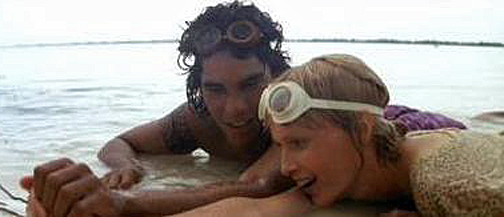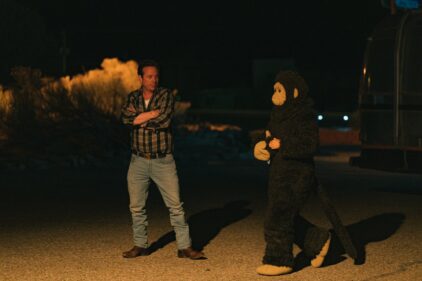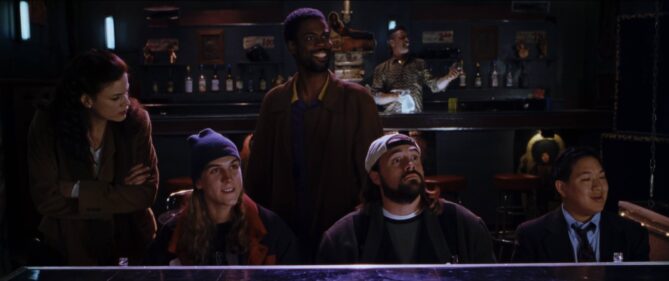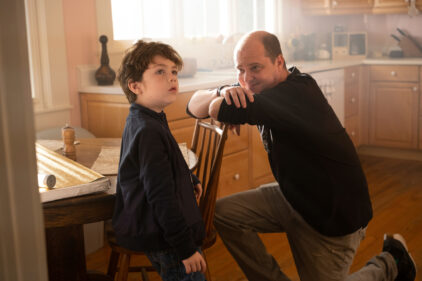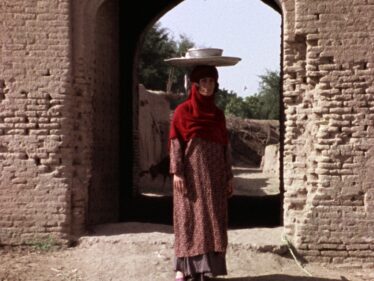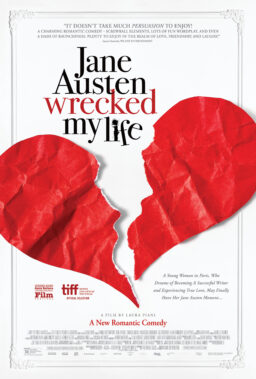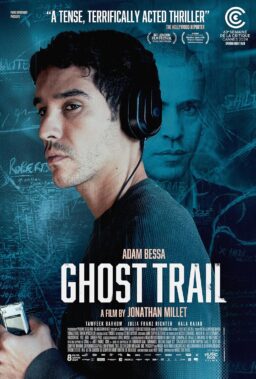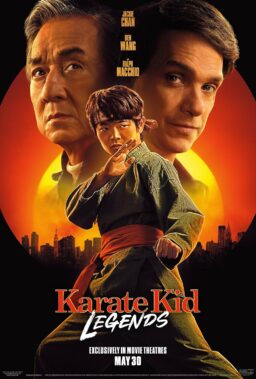Bora Bora, Society Islands — To get here you take off from Honolulu and fly into tomorrow, crossing the international date line for a refueling stop on Samoa. Then you fly back into yesterday and land on Tahiti, switch to an Air Polynesia flight to a coral landing strip, take a motorboat for another hour’s journey, and arrive after dark at the island James Michener called the most beautiful in the world. It’s a long way to go to visit a movie location, but then Dino De Laurentiis went a long way to shoot his movie.
The film is called “Hurricane.” It is more ambitious even than Dino’s “King Kong” — it will cost $24 million, and one of the first things you learn on Bora Bora is that the production is troubled. A real hurricane hit the island last February, putting the movie months behind schedule, and now there are also problems with the script, with living conditions and with a cast of unhappy actors.
It’s not surprising that “Hurricane” is having its difficulties; what is surprising is that the movie is having as few problems as it is. When Dino decided to remake Hollywood’s 1937 version of “Hurricane,” which starred Dorothy Lamour and Jon Hall and was not one of director John Ford‘s finest hours, he insisted on shooting it on location. “Today’s audiences are not fooled by movies shot on the studio’s back lot,” he declared, conveniently overlooking the back lot shots in his own successful “King Kong.” “They demand realism!”
In his search for realism, Dino considered the Bahamas and Hawaii before settling on this French Polynesian island 175 miles northwest of Tahiti. Bora Bora had been invaded once before; it was occupied during World War II by 6,000 U. S. Navy Seabees, who built the landing strip, the road around the island and gun emplacements that are still here. Michener saw it then and immortalized it in “Tales of the South Pacific.”
Dino’s peacetime invasion has been almost as complicated an undertaking as the Navy’s occupation. When he sent John Alarimo, his first location executive, to have a look at Bora Bora, Alarimo found a sleepy island of about 2,000 inhabitants, no electricity, two small hotels and a social life that centered largely around the island’s two general stores and the annual Bastille Day festivities.
On this tiny little island, De Laurentiis would have to shelter, feed and otherwise sustain some 250 cast and crew members from 14 nations. He would have to build sets and a giant tank for the hurricane scenes. He would have to bring in electricity (but not telephones — Bora Bora is still accessible only by a radio link to Tahiti). And of the two hotels, Hotel Bora Bora, was booked up for three years, and the Club Med offered its facilities for a flat $1 million for 100 days, food not included. In the midst of these crises, more bad news arrived: Dino’s director, Roman Polanski, was arrested on a morals charge.
Was Dino discouraged? Not the man who had started from scratch to build movie empires on three different occasions. Not the man who built his own movie studio outside Rome, and then shut it down and moved to New York with only one film under his arm. Not the man who, in a possibly apocryphal story, once said he didn’t want Barbra Streisand in “King Kong” because “it’s-a no good, have two monsters in one movie.”
To Dino, the problems of shooting on Bora Bora had obvious solutions. Club Med’s price was out of line? Simple: Dino would build a new hotel from scratch, and use it for “Hurricane” and his forthcoming production of two David Lean films based on “Mutiny on the Bounty.” Then he would sell his hotel at a profit. Bora Bora was hard to supply with food, supplies, film and technical equipment, and special effects gadgetry? Even simpler: Dino would buy his own 265-foot freighter to bring supplies from Los Angeles and New Zealand. Electricity? Install a new system. Polanski had fled the country? Hire the Swedish director Jan Troell.
Given the obstacles he’d already surmounted, De Laurentiis was hardly overwhelmed by the remaining small difficulties like a script even its writer admitted had problems, special effects that were months behind schedule because of the hurricane, a hotel septic system that didn’t work, a threatened mutiny of his entire crew be cause of dangerous working conditions and a cast of actors who refused to be interviewed if they had to answer any questions about the movie.
When I arrived on Bora Bora, indeed, Dino had just flown back to Los Angeles to look after other problems. But his new $3.5 million Hotel Marara was functioning nicely, the 60-foot thatched roofs of its dining and office areas flanked by smaller individual thatched huts for the cast, crew and guests. The moon rested low over the waters, illuminating an almost glass-smooth lagoon protected from the Pacific by a coral reef and tiny islands called motus.
The bar was open, crew members were watching a French TV show from Tahiti and the bartender’s stereo was playing “Midnight at the Oasis.” The first hint of problems came when I discovered that the film’s director, Jan Troell, wasn’t giving interviews. I’d met Troell in Stockholm at the premiere of his enormously successful “The Emmigrants” and “The New Land.” I thought maybe he’d talk to me. Nope, said Tom Grey, the unit publicist: Jan says no.
What about some of the stars, then? The movie is set in American Samoa in the 1920s and is about a love affair between the handsome young Polynesian chieftain and, the daughter of the U.S. naval commander. The commander was being played by Jason Robards, his daughter by Mia Farrow and the chieftain by Dayton Ka-Ne, a Honolulu beach boy discovered in a Dino talent search. Other cast members included the legendary Trevor Howard as the kindly island missionary, Max von Sydow as the doctor and Timothy Bottoms as the young naval officer who’s also competing for Farrow.
Well, Mia wasn’t giving any interviews. Robards would talk, but not about the movie. Trevor would talk, too, but not about the movie. Timothy Bottoms wasn’t talking to anybody because he was mad at the customs official who were holding up a fishing rod he’d ordered from Los Angeles. Max von Sydow was at home in Stockholm. So it goes.
We went the next day to visit the sets De Laurentiis constructed here. A complete Samoan seaport has been built in the shelter of the island’s striking volcanic mountain. Everything is there in meticulous detail: A bustling dock area, the military commander’s official residence, busy streets of little shops.
Tucked away behind the sets is Dino’s trial and passion, the 160-square-foot, 6-foot-deep tank in which the climatic hurricane scenes will be shot. Eight giant water drums are mounted above it, each able to dump between 1.600 and 2,400 gallons of water onto the hapless actors and stunt men below. Half a dozen World War II aircraft propeller engines (ironically, from Hurricane fighter planes) have been made into wind machines to whip the waves into a froth. One-third scale copies of many of the buildings have been constructed so they can be torn to pieces by the hurricane winds. Magnificent.
But the actors don’t share Dino’s enthusiasm. Two hours from Tahiti and thousands of miles from any mainland, they wonder if the location is sufficiently served by the presence of only one doctor, Dino’s personal physician. The threatened strike was to force De Laurentiis to bring in a paramedic team. The dangers were not imaginary: A Polynesian extra had been badly burned by a torch a few days ago, and Farrow had been cut badly enough in one scene to require stitches.
And what about when the tank scenes were finally ready for shooting? Unlike the big studio tanks in Hollywood and London, this one had never been used. What if the waves did drown the actors and stunt men in the tank? What if the winds knocked lights loose, electrocuting everyone in the water? Dino was due to fly back the next day, to answer the questions.
Meanwhile, we took a boat trip out to one of the little motus, where a native dance was going to be filmed after nightfall. Farrow, Robards and Bottoms were to watch Dayton Ka-Ne keeping about in the torchlight while Farrow and Ka-Ne exchanged flashes of sensuous passion. A set of a native village had been constructed on the motu, including a missionary church, a general store run by Chinese traders and a group of thatched huts.
On this set, as on the other, Dino’s dedication to accuracy, and to spending large sums of money, was obvious. “Hurricane” is going to be an expensively mounted and good-looking film, so what bothered some of the actors was the uninspired screenplay by Lorenzo Semple Jr. and Roman Polanski: It’s a rehash of 1930s Hollywood clichés, as a tumultuous romance burns to a fever pitch while the hurricane approaches.
The hurricane kills most of the unsympathetic characters and spares, of course, the protagonists, but not before an unrelenting parade of clichés: “You know you’re in trouble,” one of the actors said, “When on Page 115 the hurricane is roaring and the girl goes into labor and the doctor shouts, ‘Quick! Boil hot water! Lots of it!’”
Dino De Laurentiis didn’t seem much concerned by these and other problems when he finally arrived back in Bora Bora the following morning. He’d flown in by private jet, taken the Air Polynesia feeder flight and the boat trip and been up all night. But he didn’t seem tired as he sat beneath the cathedral-like thatched roof of his hotel’s dining room and sipped a Perrier water.
And it was a curious thing: Dino’s very presence on the island seemed to make a magical difference in the way things worked. There had been no hot water for days; now the water was hot again. Potted plants mysteriously appeared to decorate the hotel’s public areas. Work was speeded up on the tank, and Dino announced a day’s delay in the shooting (cost: about $60,000) so that he and his cinematographer, Sven Nykvist, could test possible strategies of photography in the tank. And the danger of electrocution? Simple, Dino announced: three men would stand by, ready to pull all the electrical switches if anything went wrong.
“You always have problems,” he said, “But the only way to get rid of them is to not take the risks. To shoot this movie on location was a big problem, but it was the only way. Then, we have to build the tank. They say to me, why not use the tank in London, in Hollywood? Which is easier, to build the tank here, or to take 200 Polynesians to London? Here, everything is together.”
Was there a chance, I asked, that apart from he movie making money, the hotel would also turn a profit?
“Of course! We spend $3.5 Million. Already, we have two offers for 5. By the time we’re finished, maybe more. Maybe I’ll just keep it and get a hotel management company to run it.”
Why, I asked him, had he decided to remake “Hurricane,” at such enormous cost and difficulty?
“My associate, John Alarimo, brought the old movie to me,” Dino said. “I saw it, I liked it. People like romance, adventure, escapism. This story gives them all of that. And we have to make it expensive because, cheap, it don’t look so good.”
De Laurentiis was called away for a summit meeting – Troell, Semple and Robards had conferred about the screenplay, and now Dino had to arbitrate. That left Trevor Howard, the veteran British star (“The Third Man,” “Ryan's Daughter,” the Brando “Mutiny on the Bounty”) sitting in the bar, drinking a Coke.
“I think they’re forgotten me,” he said. “I’ve been here 30 bloody days and they’ve used me once. I’ve read every book on the bloody island. My wife, Helen, says she’s coming out. I tried to tell her to stay at home: It’s a bloody bore.”
Why’d you take the job?
“Oh, you know, the usual reasons. See Bora Bora…”
Would he stay around to appear in his second version of “Mutiny on the Bounty?”
“Not very bloody likely, old chap.”
He looked morose for a moment, but then he sheered up with the reflection that the annual Bastille Day ceremonies would begin tomorrow, right here on the world’s most beautiful island.

